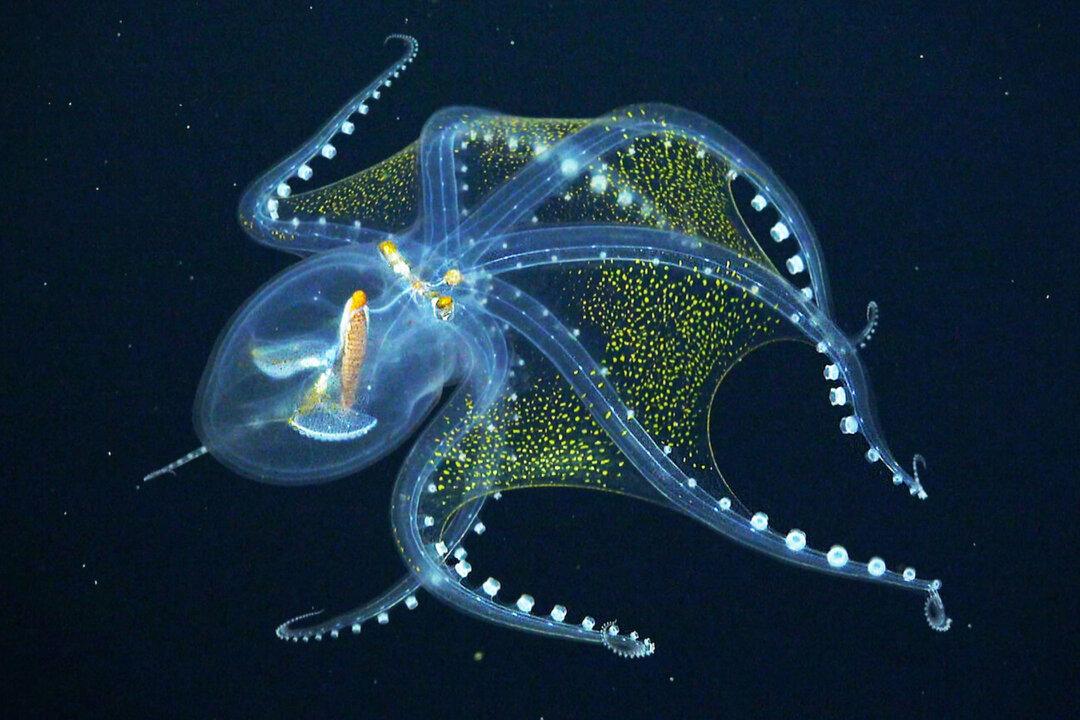An oceanic expedition recently sighted an incredibly rare deep-sea specimen—with see-through skin and eight legs—among a number of other extraordinary sights in the central Pacific.
On July 8, research vessel Falkor completed the 34-day voyage through the remote Phoenix Islands Archipelago, according to a press release from the Schmidt Ocean Institute (founded by former Google CEO Eric Schmidt with his wife Wendy), which supported the study.






